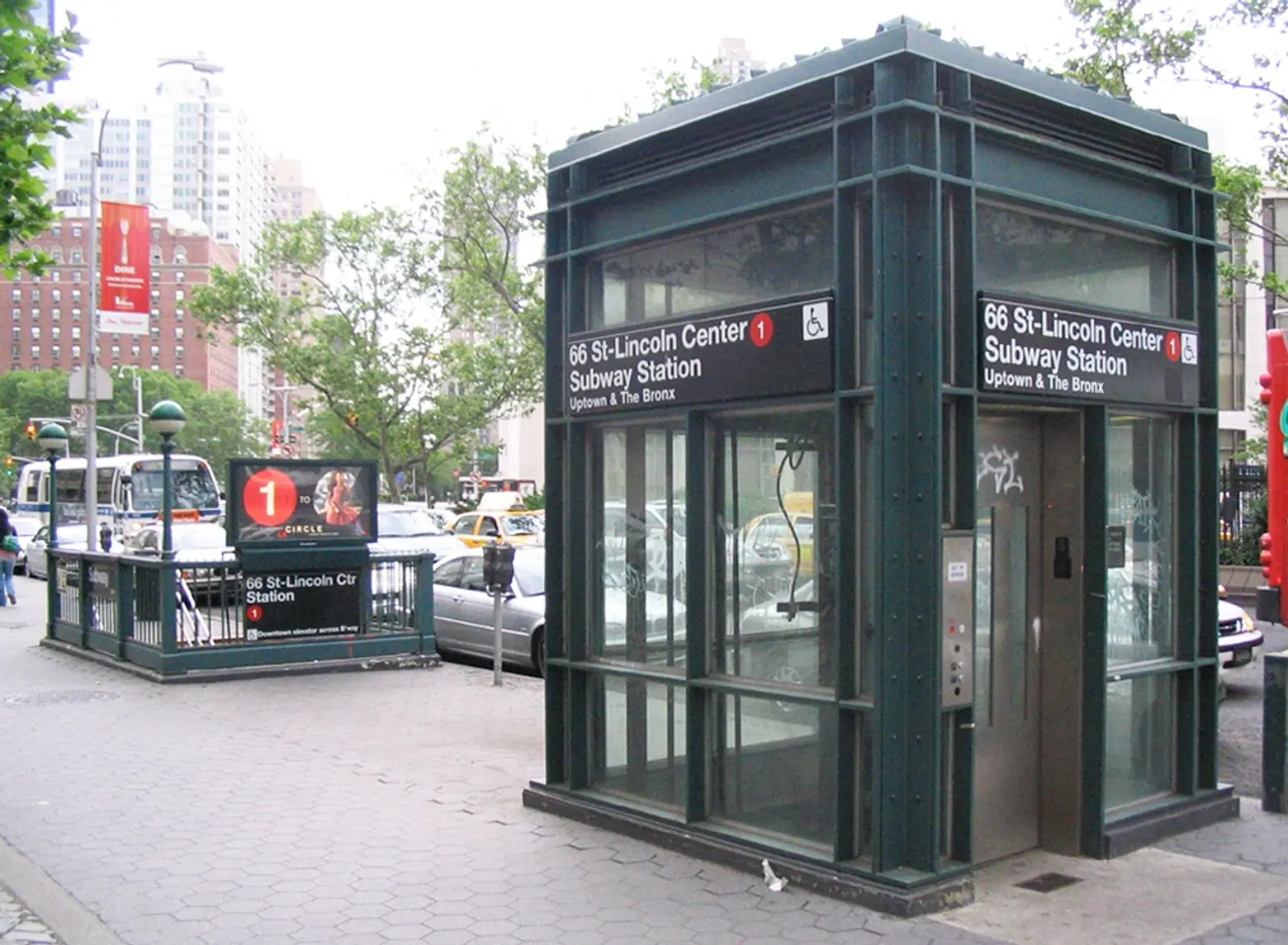Map shows less than 1/4 of NYC subway stations are accessible

Maps via The Guardian
Out of NYC’s 472 subway stations, only 117 are fully accessible, a major problem considering more than 800,000 or one-in-ten New Yorkers have a physical disability (and this doesn’t take into account those who get injured or are with a stroller). The reason for this is that our subway system was built starting in 1904, long before the Americans with Disabilities Act (ADA) became law in 1990. To highlight the issue, the Guardian put together these startling maps that show worldwide metro systems in their entirety as compared to versions that only include fully accessible stations.

Elevator at the Lincoln Center subway station, via Wiki Commons
Age seems to be the major determining factor in which cities offer the best accessibility. The London Underground, which dates to 1863 and is the world’s oldest metro, has only 50 fully accessible stations out of 260 (an additional 21 require ramps and staff assistance). Opened in 1900, Paris is even worse, with just nine fully accessible stations. Barcelona, on the other hand, is considered the most accessible system in Europe, with 129 of 156 stations classified as fully accessible. The metro here began operation in 1924, and since 1992, all stations built must be made accessible.
Back in the U.S., NYC ranks the least accessible out of the country’s ten largest metro systems, with less than 25 percent considered accessible. All of LA’s 93 stations and DC’s 91 are fully accessible. The LA system opened in 1990, on the heels of the ADA law. Washington DC was built throughout the 1970s and ’80s, but is considered one of the most accessible stations in the world. According to the Washington Metropolitan Area Transit Authority, “All stations have elevators and directional signs indicating elevator locations. Rail cars feature gap reducers between the car and the platform, barriers between cars, priority seating for people with disabilities and senior citizens, and emergency intercoms accessible to wheelchair users that also include instructions in Braille and raised alphabet.” But systems that are even older than NYC are still faring better. Boston’s accessibility rate is 74 percent and it was built in 1897, and Chicago’s is 67 percent, even though it began operating in 1892.
Is New York City taking note? Just this past spring, an 18-month audit by City Comptroller Scott Stringer’s office found that 80 percent of subway escalators and elevators don’t receive necessary maintenance. It also found that the MTA’s Division of Elevators and Escalators does not “systematically track whether and how quickly all of the defects found were corrected.” These findings were in response to lawsuits from the prior month; Disability Rights Advocates (DRA) filed state- and federal-level suits claiming the MTA has been negligent in elevator maintenance and discriminates against those with disabilities.
NYC law states that existing stations must be made ADA-compliant whenever they are renovated. The city has also committed to increasing the number of fully accessible stations from 117 to 144 by 2020. But advocacy group Disabled in Action (DIA) says this is not enough; “At the MTA’s current rate of elevator installation, it would take the MTA more than 100 years before 100 percent accessibility would be achieved,” said president Anthony Trocchia.
[Via The Guardian]
RELATED:
Interested in similar content?
Leave a reply
Your email address will not be published.

































The Center for Independence of the Disabled, New York has maps with Subway Accessibility and Populations with Disability and Poverty: https://cidny.org/subway-accessibility-maps/